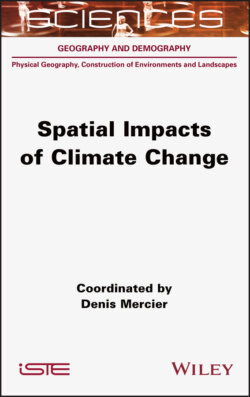Читать книгу Spatial Impacts of Climate Change - Denis Mercier - Страница 17
1.5.2. Anthropogenic greenhouse gas emissions
ОглавлениеSince the beginning of the industrial revolution, the quantity of greenhouse gases (GHGs) injected into the atmosphere by human activities (CO2, CH4, etc.) has been considerable (see Table 1.1).
These concentrations represent a major disruption in the evolution of the climate compared to pre-industrial natural evolution. These anthropogenic gases reinforce the greenhouse effect and prevent infrared radiation from leaving the lower layers of the atmosphere, which leads to the warming of the air, surface ocean layers and soils. The increase in GHGs is mainly linked to the use of fossil fuels (coal, gas and oil). However, agriculture also contributes to this increase, in particular through deforestation, which is partly responsible for the emission of carbon dioxide (CO2), rice growing and the breeding of ruminants that release methane (CH4), and pig farming and the spreading of manure as fertilizer, which is responsible for the increase in nitrous oxides (N2O). These changes are intimately linked to changes in consumption patterns and to the evolution of the world population explosion since the 19th Century, unprecedented in the history of mankind.
Table 1.1. Global annual average surface area abundances and trends of the main greenhouse gases of the Global Atmosphere Watch (GAW) of the World Meteorological Organization (WMO) Global Atmosphere Watch (GAW) global greenhouse gas (GHG) monitoring network
| CO2 | ch4 | N2O | |
| Average overall abundance in 2018 | 407.8 ± 0.1 ppm | 1,869 ± 2 ppb | 331.1 ± 0.1 ppb |
| Average overall abundance in 1750 | 278 ppm | 722 ppb | 270 ppb |
| Relative abundance in 2018 compared to 1750 | + 147% | + 259% | + 123% |
| Absolute increase between 2017 and 2018 | 2.3 ppm | 10 ppb | 1.2 ppb |
| Relative increase between 2017 and 2018 | + 0.57% | + 0.54% | + 0.36% |
| Annual average of absolute growth over the last 10 years | + 2.26 ppm per year | + 7.1 ppb per year | + 0.95 ppb per year |
COMMENT ON TABLE 1.1.- Units are molecular fractions of dry air and uncertainties are 68% confidence limits. A number of stations are used for the analyses: 129 for CO2, 127 for CH4 and 96 for N2O (source: WMO 2019).
The most optimistic scenarios of global warming are based on a decrease or stabilization of GHG emissions. However, if we look lucidly at the consumption trajectories of contemporary societies, the most pessimistic scenarios remain the most likely. In order to achieve a neutralization of Co2 emissions, the necessary changes in energy consumption, transportation, industrial production, agricultural production linked to changes in food consumption, societal choices and therefore political choices are radical and therefore unlikely in the short term, even though many solutions exist.
